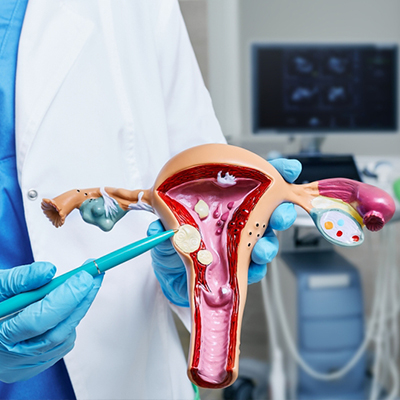uterine fibroids in anantapur
Fibroids are non-cancerous muscular tumors that develop within the uterine wall. They are also referred to as leiomyomas or myomas. These growths can manifest as a solitary tumor or in multiples, varying in size from that of an apple seed to as large as a grapefruit, and in rare instances, they can grow significantly larger as per Uterine fibroids doctor in Anantapur.
Research indicates that between 20 percent and 80 percent of women will experience fibroids by the age of 50, with the highest prevalence occurring in women during their 40s and early 50s. While not all women with fibroids exhibit symptoms, those who do may encounter significant challenges.
Common symptoms as per Best Uterine fibroids hospital in Anantapur include pain and heavy menstrual bleeding. Additionally, fibroids can exert pressure on the bladder, leading to frequent urination, or on the rectum, resulting in rectal pressure. In cases where fibroids grow excessively large, they may cause abdominal distension, which can give the appearance of pregnancy.

Types of fibroids occurring in the human body needing Fibroids treatment in Anantapur
Fibroids predominantly develop within the uterine wall. Medical professionals categorize them into three distinct types according to their location of growth:
- Submucosal fibroids extend into the uterine cavity.
- Intramural fibroids are situated within the uterine wall.
- Subserosal fibroids are located on the exterior surface of the uterus.
Most fibroids are asymptomatic; however, some women may experience the following symptoms
- Severe menstrual bleeding, potentially leading to anemia, or painful menstrual cycles
- A sensation of fullness in the pelvic region
- Swelling of the lower abdomen
- Increased frequency of urination
- Pain during sexual intercourse
- Discomfort in the lower back
- Complications during pregnancy and childbirth, including a significantly higher likelihood of requiring a cesarean section
- Rare reproductive issues, such as infertility The factors contributing to the development of fibroids may include:
- Hormonal influences, particularly related to estrogen and progesterone levels
- Genetic predisposition, as fibroids can run in families
It is understood that the growth of the fibroids is regulated by hormones, specifically estrogen and progesterone. During pregnancy, when hormone levels are elevated, they experience rapid growth. Conversely, the use of anti-hormonal medication leads to a reduction in size. Additionally, their growth ceases or diminishes once a woman attains menopause. For more information on Fibroid Removal in Anantapur, contact Dr. G. P. Sandhya Reddy who is one of the leading Gynecologist in Anantapur
